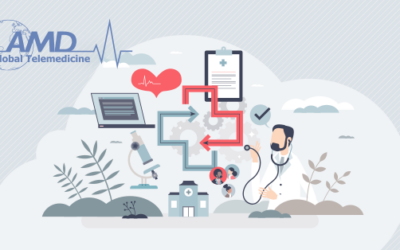The COVID-19 pandemic made virtual care, telehealth and telemedicine solutions much more popular among patients, and now they are becoming a core part of the service suite healthcare organizations offer. By enabling you to interact with more patients in less time, these platforms make your care team more efficient, boost resource utilization and drive better patient outcomes.
Virtual care technology doesn't just help you better respond to patients. It also streamlines many of your administrative processes, allowing your staff to redirect their time and energy elsewhere. All of this drives down costs while increasing patient retention and engagement. Keep reading to learn more about virtual care strategies and why you need one.
Telemedicine solutions can improve your daily operations
A telemedicine or telehealth solution offers a range of benefits to your healthcare facility, including improved operational efficiency and greater resource utilization. Overall, they allow you to drive down costs and serve your patients.
One of the chief benefits of deploying telemedicine services is faster and more efficient response times from your provider. A live-video telehealth platform has the ability to allow your staff to document a virtual visit during the session for a more accurate and efficient workflow with each patient.
Your providers can also use telemedicine channels to serve more patients over a much shorter period of time. Virtual visits tend to be quicker overall than in-person ones. This saves your providers time and enables them to devote more of their attention to other patients.
Because telemedicine gives providers the opportunity to meet with patients more frequently, they're better able to ensure patients are following their care plans. This lowers the chances of readmission and can drive down costs.
Improve overall patient engagement and retention
It's important that your staff is able to easily use your telehealth technologies, but it's essential that your patients can. Offering them a seamless, easy-to-use series of platforms helps ensure that they are actually using your channels and getting quality care.
One of the greatest patient benefits of virtual care services is that it increases their access to your services. That means allowing them to book a virtual appointment whenever it's easiest and most convenient for them. And when they're sick, they don't have to travel all the way to your healthcare organization. This can have a soothing effect when they're feeling most uncomfortable.
The convenience factor is a crucial part of the patient engagement and experience because it means they are much more likely to come back in the future. This will help your organization maintain a long-term relationship with your patient.

Telemedicine systems can grow with the business needs of your practice
As cloud-based computing continues to develop, healthcare providers are becoming better able to manage their telehealth sites from a single access point. This is an important point to consider, because your growing business will require more scalable technologies to continue to meet new pressures.
To help accomplish this, you'll need to have the technology that adapts to both low acuity and high acuity care as well as multiple encounter modalities. In addition to live-video conferencing and messaging, the integration of medical devices will allow your providers to deliver more clinical quality assessments.
Not only does more diverse virtual services help you maintain and strengthen your current business, it also facilitates future growth by making it easier to acquire and develop relationships with new patients.
Technology can be used to better allocate staffing resources for patients
Acuity-based staffing allocates resources based on the specific medical needs of each individual patient. Digital tools allow you to accurately record patient data from every interaction you have with them via telemedicine services. You can use this data to more accurately gauge a patient's needs and better distribute resources to meet them. It ensures you're not giving low-acuity patients too much medical attention and, worse, neglecting those in greater need.
Of course, low-acuity patients will also benefit from better allocation of staffing resources. Telemedicine allows both patient and provider to quickly and easily interact, so you can more frequently check in on your low-acuity patients. Providers can also transcribe the data in real time, reducing the chances of error and ultimately increasing the quality of patient care. This helps you better serve your patients without causing satisfaction to take a hit.
Get AMD on your side
Virtual care services have quickly become a must in today's health environment. If you're ready to leverage telemedicine in your virtual care strategy to help improve patient retention and the overall patient experience, you'll need to have the right team of experts on your side to make it happen.
AMD Global Telemedicine has been a pioneer of telemedicine and an industry leader in telehealth services for the past 30 years. If you're interested in learning more about AMD and our telemedicine and telehealth technologies, contact us today and find out how we can help improve your telehealth program.





